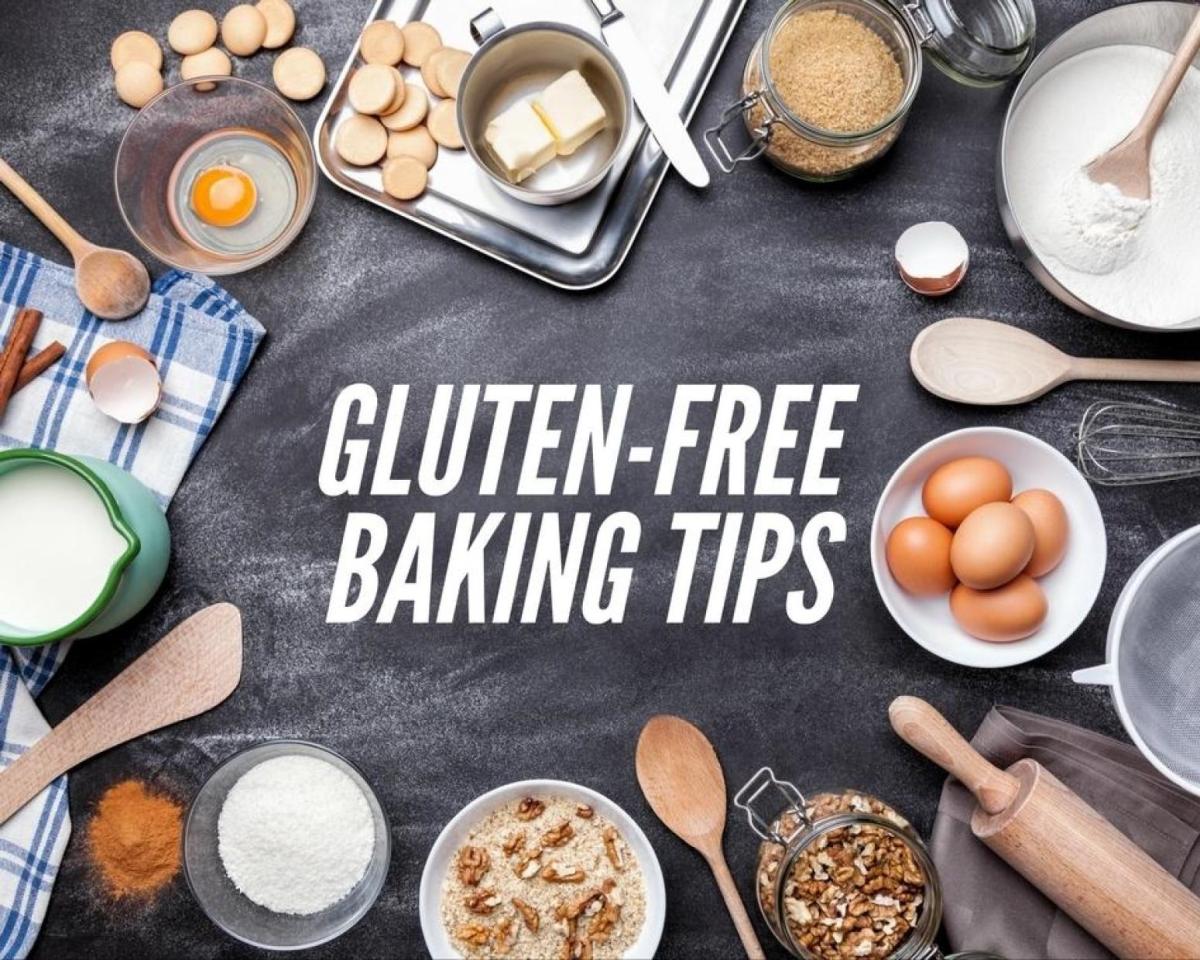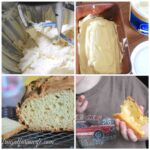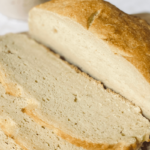Embark on a culinary adventure where the seemingly impossible becomes deliciously achievable. This guide unveils the secrets to mastering gluten-free baking, transforming frustrating experiences into consistently delightful results. Learn to navigate the nuances of different gluten-free flour blends, master essential techniques, and troubleshoot common pitfalls. Prepare to bake confidently, creating light, airy, and flavorful treats that rival their gluten-containing counterparts.
From understanding the unique properties of various gluten-free flours—like the delicate crumb of almond flour versus the subtle sweetness of coconut flour—to mastering techniques that coax lightness and airiness into your cakes and cookies, this guide provides a comprehensive toolkit. Discover the secrets to achieving perfectly browned edges, moist interiors, and a texture that will leave you and your guests utterly satisfied. We’ll explore ingredient substitutions, offering creative alternatives to traditional baking staples, and provide solutions for common problems like dense textures or gummy consistencies. Get ready to elevate your gluten-free baking to a whole new level of deliciousness.
Essential Ingredients and Substitutions
Mastering gluten-free baking hinges on understanding the unique properties of gluten-free flours and the role of each ingredient in creating a successful baked good. This section will explore essential ingredients, their functions, and suitable substitutes, empowering you to adapt recipes and achieve consistently delicious results.
Essential Gluten-Free Ingredients and Their Substitutes
Selecting the right ingredients is paramount for achieving the desired texture and flavor in gluten-free baking. The following list details essential ingredients and their common substitutes, highlighting their impact on the final product.
- Gluten-Free Flour Blend: The foundation of any gluten-free recipe. Most blends combine various flours like rice flour, tapioca starch, potato starch, and others to mimic the properties of wheat flour. Substitutes: While a pre-made blend is convenient, you can experiment with creating your own blend, adjusting the ratios based on the desired texture and outcome. For example, a blend heavier in almond flour will yield a denser, nuttier result, while one emphasizing tapioca starch will create a lighter, chewier texture.
- Starch: Starches like tapioca starch, potato starch, and cornstarch contribute to lightness and moisture. Tapioca starch provides a slightly chewy texture, while potato starch adds moisture and a slightly fluffy texture. Cornstarch provides a tender crumb. Substitutes: Arrowroot starch can be used interchangeably with cornstarch in many recipes. However, be mindful that direct substitution may slightly alter the final texture.
- Binding Agents: These ingredients help bind the dry ingredients together, mimicking the role of gluten. Xanthan gum and guar gum are commonly used. Substitutes: Psyllium husk powder can be used as a substitute, although it often requires a slightly different ratio. Flaxseed meal, when mixed with water, can also provide some binding, but it adds a distinct flavor.
- Leavening Agents: Baking powder and baking soda are crucial for creating lift and airiness in gluten-free baked goods. Substitutes: While less common, alternatives like cream of tartar (used in conjunction with baking soda) can be explored, but careful attention to ratios is necessary.
- Liquids: Milk (dairy or non-dairy), water, and eggs provide moisture and structure. Substitutes: Applesauce, mashed bananas, or yogurt can be substituted for liquids in some recipes, adding moisture and flavor.
Impact of Different Sweeteners
The choice of sweetener significantly influences the texture and flavor profile of gluten-free baked goods.
Granulated sugar provides sweetness and structure, contributing to a more traditional cake-like texture. Honey adds moisture and a distinct flavor, potentially leading to a denser, slightly more moist crumb. Maple syrup, similar to honey, imparts a unique flavor and moisture but can also darken the color of the baked good. The level of sweetness and the resulting moisture content vary significantly, requiring potential adjustments to liquid ratios in the recipe. For example, honey and maple syrup often require a reduction in other liquid ingredients due to their higher moisture content.
Egg Substitutions in Gluten-Free Baking
Eggs play a vital role in gluten-free baking, contributing to binding, leavening, and moisture.
Several effective substitutes can be used, each impacting the final product differently. For example, applesauce or mashed banana can replace eggs, providing moisture and some binding. Flaxseed meal or chia seeds, mixed with water, create a gel-like consistency that mimics the binding properties of eggs. Commercial egg replacements are also readily available and often provide a more neutral flavor profile. However, it’s crucial to remember that the substitution may slightly alter the texture and potentially require recipe adjustments. A recipe using one egg might require 1/4 cup of applesauce or a tablespoon of flaxseed meal mixed with three tablespoons of water as a replacement, but this is highly dependent on the recipe.
Troubleshooting Common Gluten-Free Baking Problems

Gluten-free baking presents unique challenges compared to traditional baking. The absence of gluten, the protein responsible for structure and elasticity in wheat flour, necessitates careful attention to ingredients and techniques to achieve desirable results. Understanding common problems and their solutions is key to consistent success.
Common Gluten-Free Baking Problems and Solutions
Many issues arise in gluten-free baking, often stemming from the properties of gluten-free flours. The following table Artikels some frequent problems and practical solutions. Remember that experimentation is crucial; what works for one recipe might need adjustment for another.
| Problem | Solution |
|---|---|
| Dense, heavy texture | Reduce the amount of liquid in the recipe. Overmixing can also lead to density, so mix only until just combined. Consider adding a leavening agent like xanthan gum or guar gum to increase lift. Using a lighter gluten-free flour blend can also improve texture. |
| Gummy or sticky consistency | Too much liquid is often the culprit. Start by reducing the liquid amount gradually. Adding more gluten-free flour, a tablespoon at a time, can help absorb excess moisture. Ensure your gluten-free flour blend is not overly moist. |
| Uneven browning | This can be due to inconsistencies in oven temperature or the type of pan used. Use a dark-colored baking pan for even browning or consider rotating the pan during baking. Monitor the baking process closely and adjust baking time as needed. A convection oven can also promote more even browning. |
| Crumbly texture | Insufficient liquid or an overly dry gluten-free flour blend might cause crumbliness. Add liquid a tablespoon at a time, mixing well after each addition, until the desired consistency is achieved. Consider using a gluten-free flour blend with higher starch content. |
| Dry, hard texture | Over-baking is the most common reason for dry, hard gluten-free baked goods. Use an oven thermometer to ensure your oven is at the correct temperature. Start checking for doneness a few minutes earlier than the recipe indicates. |
Adapting Existing Recipes for Gluten-Free Baking
Converting a traditional recipe to gluten-free requires more than simply substituting wheat flour with a gluten-free blend. The ratio of ingredients often needs adjustment. Gluten provides structure and elasticity, which gluten-free flours lack. Therefore, xanthan gum or guar gum is frequently added to mimic gluten’s binding properties. Experimentation and careful observation are key to success. For instance, a recipe calling for 2 cups of all-purpose flour might require only 1 ¾ cups of a gluten-free blend plus 1-2 teaspoons of xanthan gum. The liquid content might also need adjustment to compensate for the different absorption rates of gluten-free flours. Baking time often needs to be reduced slightly.
Troubleshooting a Dense or Crumbly Gluten-Free Muffin Recipe
Let’s consider a common problem: dense or crumbly gluten-free muffins. This often results from an imbalance of wet and dry ingredients or improper mixing. Imagine a recipe that consistently yields dense muffins. Here’s a step-by-step troubleshooting guide:
- Assess the recipe: Carefully review the ingredient ratios. Is there sufficient liquid to properly hydrate the gluten-free flour blend? Is the leavening agent (baking powder or baking soda) fresh and sufficient?
- Adjust the liquid: If the muffins are dense, start by adding 1-2 tablespoons of liquid (milk, water, or oil) at a time, mixing well after each addition, until a slightly thicker than usual batter is achieved. If they are crumbly, reduce the liquid slightly, adding it a tablespoon at a time until the batter is moist but not wet.
- Check the leavening: Ensure your leavening agent is fresh. Old baking powder or baking soda will not provide sufficient lift, resulting in dense muffins. Consider adding a tiny extra amount of fresh leavening agent (1/4 teaspoon at a time).
- Mix gently: Overmixing develops gluten in traditional baking, leading to tough baked goods. However, in gluten-free baking, overmixing can still lead to dense muffins by breaking down the structure of the gluten-free flour blend. Mix only until the ingredients are just combined.
- Adjust baking time: Slightly reduce the baking time to prevent over-baking, which contributes to dryness and density. Begin checking for doneness a few minutes earlier than the recipe suggests. Use a toothpick inserted into the center – it should come out with a few moist crumbs attached, not wet batter.
- Consider the flour blend: Experiment with different gluten-free flour blends. Some blends are better suited for muffins than others. A blend with a higher proportion of starch may produce a lighter texture.
With the knowledge gleaned from this guide, the world of gluten-free baking opens up with endless possibilities. No longer will dense, dry, or crumbly results be a source of frustration. Instead, you’ll possess the confidence and expertise to create a stunning array of gluten-free masterpieces. From perfectly textured cakes to melt-in-your-mouth cookies, your baking journey will be transformed, filled with delicious success and the joy of sharing your creations with others. Remember, mastering gluten-free baking is a journey of exploration and experimentation, and this guide is your trusted companion along the way.
FAQ Corner
Can I use regular baking powder in gluten-free baking?
Yes, but consider using a slightly higher amount than in traditional recipes, as gluten-free batters sometimes require more leavening.
Why is my gluten-free bread so dense?
This often stems from insufficient leavening, improper mixing, or using too much liquid. Check your recipe and technique for potential adjustments.
How do I prevent gluten-free cookies from spreading too much?
Chill the dough thoroughly before baking. This firms up the fats, preventing excessive spreading.
What’s the best way to store gluten-free flour blends?
Store them in an airtight container in a cool, dark, and dry place to maintain freshness and prevent spoilage.


